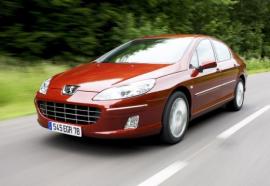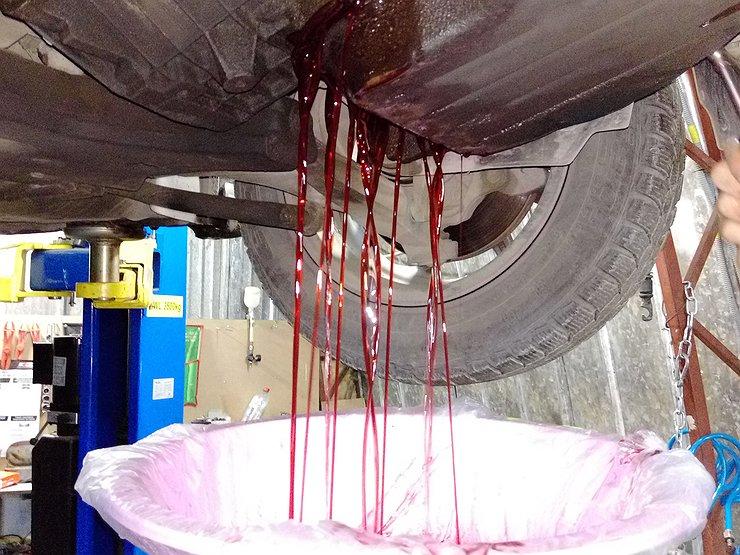
Peugeot 407 2.2 HDi ST Sport
To be precise, the 2.2 HDi was one of the first engines to be so named. And also one of the first with a common engine lineup in the Peugeot engine range.
When he was born - in the last years of the last century - he was considered a real force. It was capable of developing power from 94 to 97 kilowatts (depending on the model) and offered 314 Nm of torque. More than enough for those times. Although it is true that in larger models it quickly became clear that power and torque are never in abundance. Especially in those where manual gear shifting has taken over the automatic transmission.
Years passed, competitors did not sleep, and it so happened that even in his own house, the engine was two deciliters less powerful than his older brother.
And not only in power. The kid also has more torque. Anxiety! Nothing like this should happen in the house. PSA engineers called Ford as their collaboration had been successful on several occasions, and together they rolled up their sleeves and tackled the largest diesel four-cylinder engine again. The fundamentals have not changed, which means the engine has the same block with the same bore sizes and stroke.
However, the combustion chambers were completely redesigned, the compression ratio was reduced, the old injection generation was replaced with a new one (piezoelectric injectors, seven holes, up to six injections per cycle, filling pressure up to 1.800 bar) and modernized with a completely new forced filling system. This is the essence of this engine.
Instead of one turbocharger, it hides two. Slightly smaller, placed in parallel, one of which works constantly, and the other comes to the rescue if necessary (from 2.600 to 3.200 rpm). While driving, this means that the engine does not behave as one would expect from the technical data, as power and torque are now quite common for such large volumes of diesels. What's more, everything else is achieved with a single turbocharger.
So, it is clear that the advantages of two turbochargers should not be sought in more power, but elsewhere. What is the biggest disadvantage of diesel engines - in a narrow operating range, which in modern diesel engines is from 1.800 to 4.000 rpm. If we want to increase the power of an engine with a larger turbocharger, this area becomes even narrower due to the way turbochargers work. So the PSA and Ford engineers decided to go the other way, and the truth is that their decision was the right one.
It doesn't take long to see the benefits of its design. A few miles is enough, and everything becomes clear in an instant. This engine has 125 kilowatts and 370 Newton meters of torque, no doubt about it, but if you're used to spiral diesels, you won't feel it behind the wheel. Acceleration is incredibly consistent across the entire work area and without unnecessary jolts. The unit spins up nicely from 800 crankshaft revolutions. And this time use the word "pleasant" literally. That the engine in the nose accelerates from power, however, you only learn on descents where its torque and power really come to the fore. Blind acceleration doesn't end there!
Be that as it may, the fact is that Peugeot has again a modern 2-liter diesel, which in the next few years will be able to compete without problems with its competitors. So it's time to tackle his gearbox, which remains his biggest drawback. Admittedly, it's a six-speed gearbox, and it's better than most we've tested on the Peugeot, but it's still too poorly finished to conjure up the superiority of a product tucked away in the driver's nose.
Matevž Koroshec
Photo: Aleš Pavletič.
Peugeot 407 2.2 HDi ST Sport
Basic data
| Sales: | Peugeot Slovenia doo |
|---|---|
| Base model price: | 27.876 € |
| Test model cost: | 33.618 € |
| Calculate the cost of auto insurance | |
| Power: | 125kW (170 KM) |
| Acceleration (0-100 km / h): | 8,7 with |
| Maximum speed: | 225 km / h |
| Mixed flow ECE: | 6,1l / 100km |
Technical information
| engine: | 4-cylinder - 4-stroke - in-line - direct injection biturbodiesel - displacement 2179 cm3 - maximum power 125 kW (170 hp) at 4000 rpm - maximum torque 370 Nm at 1500 rpm. |
|---|---|
| Energy transfer: | front wheel drive engine - 6-speed manual transmission - tires 215/55 R 17 V (Goodyear UG7 M + S). |
| Capacity: | top speed 225 km / h - acceleration 0-100 km / h in 8,7 s - fuel consumption (ECE) 8,1 / 5,0 / 6,1 l / 100 km. |
| Mass: | empty vehicle 1624 kg - permissible gross weight 2129 kg. |
| External dimensions: | length 4676 mm - width 1811 mm - height 1445 mm - trunk 407 l - fuel tank 66 l. |
Our measurements
| (T = 7 ° C / p = 1009 mbar / relative temperature: 70% / meter reading: 2280 km) | |
| Acceleration 0-100km: | 9,5s |
|---|---|
| 402m from the city: | 16,8 years ( 137 km / h) |
| 1000m from the city: | 30,2 years ( 178 km / h) |
| Flexibility 50-90km / h: | 7,0 / 10,1s |
| Flexibility 80-120km / h: | 9,1 / 11,6s |
| Maximum speed: | 225km / h (WE.) |
| test consumption: | 8,8 l / 100km |
| Braking distance at 100 km / h: | 46,7m |
| AM table: | 40m |
evaluation
At Peugeot, the new 2.2 HDi engine fills a gap well in the diesel engine lineup. And this must not be overlooked. At the same time, a unit was launched, which at the moment is one of the most modern in its design. But this usually means little to the average user. Power, torque, comfort and fuel consumption are much more important, and with all of the above, this engine turns out in the most beautiful light.
We praise and reproach
modern engine design
capacity
federal demand
fuel consumption (by power)
comfort
inaccurate gearbox
automatic activation of ESP at a speed of 50 km / h
center console with buttons
